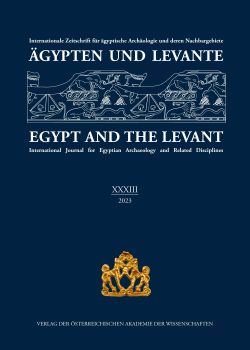
Ägypten und Levante 33, pp. 217-233, 2024/02/28
Internationale Zeitschrift für ägyptische Archäologie und deren Nachbargebiete
International Journal for Egyptian Archaeology and Related Disciplines
This article presents an onomastic study of a writing board housed in the British Museum, London. The accounting document shows the production and distribution circuit of the srm.tbeverage within the Theban region (Dautais, Gabolde, and Birin 2022). Onomastics supports the date range suggested by paleographic analysis, i.e., a mid-18th Dynasty date and, specifically between the beginning of Thutmose III’s personal reign and the onset of Amenhotep II’s reign. Some individuals with anthroponyms of West Semitic origin (e. g., Benia) or based on Levantine deities (Aper-Reshep, Bensharima/Ben-Shalim, Kafykebeb/Kafy-Kubaba, and Hererima/Her-rem) and Levantine (Qadjana and Qedemy), Aegean (Pakeftiu), and perhaps Oasian (Pentawahyt) toponyms play an active part in this circuit. This data highlights the robust cosmopolitan nature of the Theban region during the second half of the 15th century BCE. Furthermore, I argue that the numerical importance of people of Levantine origin (constituting almost a third of the anthroponyms listed) in the chaîne opératoire of this beverage would imply a particular know-how possibly imported—as a knowledge transfer—from the Near East.
Keywords: Writing board; hieratic; accounting document; 18th Dynasty; srm.t; Anthroponomy; Egypt; Ancient Near East; Crete; knowledge transfer